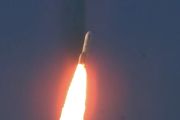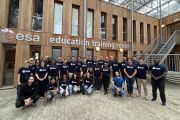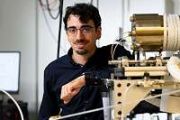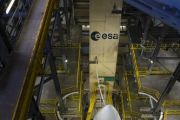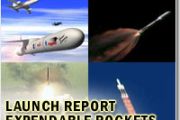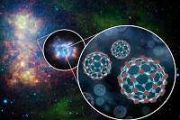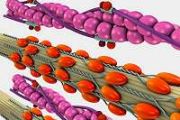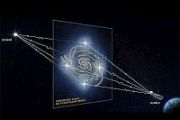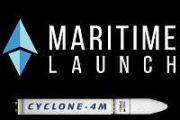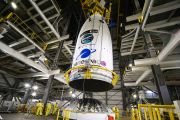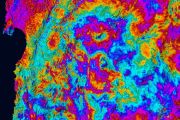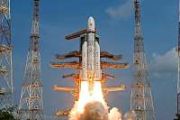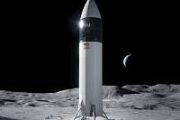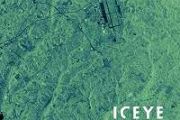
Copernical Team
The Space Economy to Reach $944 Billion by 2033
 Novaspace, a prominent space consulting and market intelligence firm, has unveiled the 11th Edition of its Space Economy Report, projecting a significant growth trajectory for the global space economy. The report anticipates an increase from $596 billion in 2024 to $944 billion by 2033, driven largely by the advancement of downstream applications, signaling a transformative decade for the sector
Novaspace, a prominent space consulting and market intelligence firm, has unveiled the 11th Edition of its Space Economy Report, projecting a significant growth trajectory for the global space economy. The report anticipates an increase from $596 billion in 2024 to $944 billion by 2033, driven largely by the advancement of downstream applications, signaling a transformative decade for the sector Skylo Unlocks Satellite Connectivity for Billions of Devices
 Skylo, a leader in Non-Terrestrial Network (NTN) communications, has announced its achievement in unlocking satellite connectivity for over a billion devices worldwide, spanning various industries and applications. This milestone positions Skylo as the largest commercial standards-based direct-to-device network globally.
This expansion reflects the growing demand from both consumers and bu
Skylo, a leader in Non-Terrestrial Network (NTN) communications, has announced its achievement in unlocking satellite connectivity for over a billion devices worldwide, spanning various industries and applications. This milestone positions Skylo as the largest commercial standards-based direct-to-device network globally.
This expansion reflects the growing demand from both consumers and bu SATELLAI introduces satellite and AI-driven pet wearables
 SATELLAI, a leader in AI-integrated pet technology, presented its groundbreaking SATELLAI Tracker and SATELLAI Collar at CES 2025 in Las Vegas. These innovative products, equipped with satellite tracking and AI functionalities, offer dog owners enhanced convenience and peace of mind, especially during outdoor excursions.
The SATELLAI Tracker, crafted for outdoor enthusiasts, excels in envi
SATELLAI, a leader in AI-integrated pet technology, presented its groundbreaking SATELLAI Tracker and SATELLAI Collar at CES 2025 in Las Vegas. These innovative products, equipped with satellite tracking and AI functionalities, offer dog owners enhanced convenience and peace of mind, especially during outdoor excursions.
The SATELLAI Tracker, crafted for outdoor enthusiasts, excels in envi A Sustainable Development Goal for Earth's Orbit
 Scientists are advocating for the United Nations to establish a new Sustainable Development Goal (SDG) focused on protecting Earth's orbit and curbing the accumulation of space debris.
Currently, the UN recognizes 17 SDGs, introduced in 2015 to inspire global efforts to eliminate poverty, safeguard the environment, and promote prosperity. However, the increasing presence of satellites and
Scientists are advocating for the United Nations to establish a new Sustainable Development Goal (SDG) focused on protecting Earth's orbit and curbing the accumulation of space debris.
Currently, the UN recognizes 17 SDGs, introduced in 2015 to inspire global efforts to eliminate poverty, safeguard the environment, and promote prosperity. However, the increasing presence of satellites and UNH researchers categorize aurora image database using artificial intelligence
 The aurora borealis, or northern lights, is renowned for its mesmerizing display of light in the night sky. However, this natural phenomenon-driven by solar activity and carried by solar winds-can disrupt crucial communications and security infrastructure on Earth. Researchers at the University of New Hampshire (UNH) have leveraged artificial intelligence to categorize and label a vast database
The aurora borealis, or northern lights, is renowned for its mesmerizing display of light in the night sky. However, this natural phenomenon-driven by solar activity and carried by solar winds-can disrupt crucial communications and security infrastructure on Earth. Researchers at the University of New Hampshire (UNH) have leveraged artificial intelligence to categorize and label a vast database NTU Singapore researchers reveal new method to study dark matter
 Researchers at Nanyang Technological University, Singapore (NTU Singapore) have developed an innovative approach that could pave the way for detecting the elusive "dark matter" and unlock deeper insights into the cosmos.
Dark matter, which scientists estimate makes up about 85% of the universe's matter, remains one of the most mysterious components of the cosmos. Unlike visible matter-such
Researchers at Nanyang Technological University, Singapore (NTU Singapore) have developed an innovative approach that could pave the way for detecting the elusive "dark matter" and unlock deeper insights into the cosmos.
Dark matter, which scientists estimate makes up about 85% of the universe's matter, remains one of the most mysterious components of the cosmos. Unlike visible matter-such SETI Forward celebrates the future of cosmic exploration
 The SETI Institute has announced Gabriella Rizzo and Pritvik Sinhadc as recipients of the 2024 SETI Forward Award. Both honorees have demonstrated exceptional dedication to research that advances our understanding of life in extreme environments and the potential for extraterrestrial intelligence. These awards, established by Lew Levy, founder of the SETI Forward committee and a member of the SE
The SETI Institute has announced Gabriella Rizzo and Pritvik Sinhadc as recipients of the 2024 SETI Forward Award. Both honorees have demonstrated exceptional dedication to research that advances our understanding of life in extreme environments and the potential for extraterrestrial intelligence. These awards, established by Lew Levy, founder of the SETI Forward committee and a member of the SE SwRI models suggest Pluto and Charon formed similarly to Earth and Moon
 A NASA postdoctoral researcher at the Southwest Research Institute (SwRI) has employed advanced simulations to propose that Pluto and its largest moon, Charon, formed in a manner akin to the Earth-Moon system. Unlike most moons in the solar system, Charon is an unusually large fraction of Pluto's size. This formation scenario could also help explain Pluto's active geology and the potential prese
A NASA postdoctoral researcher at the Southwest Research Institute (SwRI) has employed advanced simulations to propose that Pluto and its largest moon, Charon, formed in a manner akin to the Earth-Moon system. Unlike most moons in the solar system, Charon is an unusually large fraction of Pluto's size. This formation scenario could also help explain Pluto's active geology and the potential prese NASA to evaluate dual strategies for bringing Mars samples back to Earth
 NASA has unveiled a revised strategy for its Mars Sample Return Program, introducing a dual approach to increase the likelihood of successfully delivering Martian rock and sediment samples to Earth. This initiative will simultaneously develop two landing architectures during the program's formulation phase, fostering competition and innovation while aiming for cost efficiency and adherence to sc
NASA has unveiled a revised strategy for its Mars Sample Return Program, introducing a dual approach to increase the likelihood of successfully delivering Martian rock and sediment samples to Earth. This initiative will simultaneously develop two landing architectures during the program's formulation phase, fostering competition and innovation while aiming for cost efficiency and adherence to sc Westinghouse Awarded NASA DOE Contract for Space Microreactor Development
 Westinghouse Electric Company announced that it has been selected by NASA, in collaboration with the U.S. Department of Energy (DOE), to advance its space microreactor concept through the Fission Surface Power (FSP) project. The contract, awarded by Idaho National Laboratory (INL), continues Westinghouse's Phase 1 work, focusing on optimizing system designs and initiating critical technology tes
Westinghouse Electric Company announced that it has been selected by NASA, in collaboration with the U.S. Department of Energy (DOE), to advance its space microreactor concept through the Fission Surface Power (FSP) project. The contract, awarded by Idaho National Laboratory (INL), continues Westinghouse's Phase 1 work, focusing on optimizing system designs and initiating critical technology tes 
